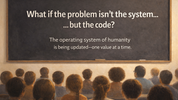For much of the 20th century, careers had a rhythm. You entered a profession, often through an entry-level role. You learned the ropes, gained experience, and steadily climbed the ladder: junior, senior, manager, director, perhaps even CEO.
The promise was simple: work hard, keep learning, and each rung of the ladder would appear in front of you.
But for many people entering the workforce today, that ladder is vanishing.
The Collapse of Traditional Pathways
AI isn’t just creating new industries; it’s also erasing the stepping-stones that once defined a “normal” career path.
- Entry-level roles that once provided training grounds are increasingly automated. Tasks like drafting reports, scheduling, data analysis, and even customer service are now routinely handled by AI.
- Middle layers of management are thinning too. AI-enhanced dashboards, workflow automation, and decision-support systems reduce the need for layers of oversight.
- Even senior roles are being reshaped. Executives now need to integrate human judgment with AI insights, demanding a skillset that didn’t exist even five years ago.
The result? For many, the old metaphor of climbing a ladder no longer fits. There isn’t always a clear “next rung.” Sometimes the ladder isn’t even there.
From Ladders to Lattices
Instead of a predictable, upward climb, careers are becoming more like lattices, sideways moves, diagonal shifts, portfolio careers, and gig-style engagements.
This shift isn’t inherently bad. A lattice can offer more flexibility, more learning opportunities, and more chances to reinvent yourself. But it also requires new skills: adaptability, resilience, and a willingness to navigate uncertainty without a guaranteed map.
It also asks a deeper, more personal question:
If the ladder is gone, “How do I define progress for myself?”
The Psychological Toll
For those raised on the ladder metaphor, its disappearance can feel like betrayal. Students work hard for degrees, expecting them to translate into entry-level positions. Professionals invest years in one role, only to find there’s no obvious next step.
Headlines like “AI replacing graduates before they begin” aren’t just sensationalism. They trigger real anxiety:
- Am I already obsolete before I’ve begun?
- How do I ‘move up’ when up no longer exists?
- What does success look like when the map is gone?
These are not technical questions. They’re human ones. And they deserve space to be asked, reflected on, and reimagined.
Reframing “The New Normal”
If the old ladder is disappearing, what might replace it?
- Journeys, not ladders: Growth as exploration, not a fixed climb.
- Skills, not steps: Valuing the abilities we cultivate, not just the titles we hold.
- Meaning, not metrics: Choosing directions that align with values, not only promotions.
This doesn’t mean discarding ambition. It means redefining it not as a vertical ascent, but as a conscious journey shaped by curiosity, adaptability, and contribution.
Reflective Questions
Take a quiet moment with these prompts, perhaps journal them, or sit with them, and ask your Head, Heart and Gut (brains) the following questions, and see if you get the same answer from each:
- What did the “career ladder” mean to me when I first thought about work?
- How has my sense of “progress” in life or work changed in the past five years?
- If ladders are disappearing, what metaphor better describes my own journey now: a path, a lattice, a spiral, a river?
- What small step can I take this week to explore sideways growth, not just upward advancement?
A Closing Reflection
The vanishing of the career ladder isn’t just about jobs. It’s about identity. It asks us to rethink what we’re aiming for, what we measure ourselves against, and how we find security in a world that keeps shifting.
And perhaps, in that rethinking, lies the seed of freedom: the chance to design a work-life journey that fits who we are becoming, not just the rungs someone else built long ago.
 unknownx500
unknownx500





